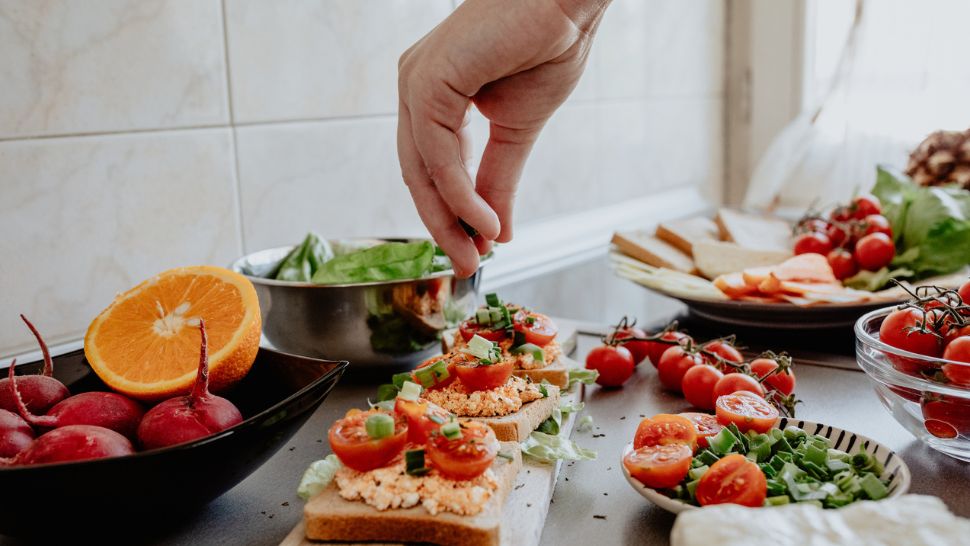
We’ve all been there — a day full of appointments with no time to think in between, much less fit in a healthy meal or snack. Far too often, our go-to fix is a quick bite from a vending machine or convenience store, which is where snacking gets a bad rap. So, what is a busy serial snacker to do?
First, it’s important to realize that snacking is not “bad” and eating small meals or bites throughout the day is completely normal. In fact, many cultures around the world have one or two larger meals per day and multiple smaller snack-able servings instead of three-square meals. And snacking may have benefits: research shows that munching on a balanced snack — one with a mix of protein, complex carbohydrates (hello fiber), and healthy fats — is an excellent way to stabilize blood sugar and stave off hunger.
However, mindlessly overeating processed high sugar and high-salt snacks may leave you feeling hungry soon after. So how do you get the upside of snacking to meet your (hunger and energy) needs?
The answer lies in planning ahead for when hunger strikes. Read our top 5 tips for smart snacking!
- Listen to your body’s natural hunger cues
Waiting too long to eat after you start to feel hungry means you’re much more likely to grab whatever’s close than make conscious eating decisions. Some signs of hunger are feeling lightheaded or dizzy, mental cloudiness, empty or growling stomach, lack of energy, and headache. So, nip hunger in the bud when it strikes rather than letting it build up to a point of being “hangry.” - Emphasize whole foods
Foods that are in their natural form or are lightly processed will keep you full for longer. Fruits, vegetables, nuts, seeds, whole grains, and eggs can provide a great start, and you can build from there. - Eat a mix of protein, fiber, and fat
Aim for at least two of the three in any snack. That might mean pairing an apple (fiber) with nut butter (fat with a little protein) or hummus (protein and a little fat) with vegetables (fiber) or whole-grain crackers (also fiber). Other easy on-the-go options include nuts with dried fruit, a hard-boiled egg with some fruit or vegetables, or homemade energy bites. - When picking packaged, use the same principles
Let’s be real. Grabbing something in a package is the quickest and simplest option sometimes — and luckily, food companies are now making plenty of prepackaged items that will keep you energized until your next meal. However, be wary of any health claims and instead look at the ingredients. Choose items that are mostly whole food-based, such as dried chickpeas, beet or kale chips, or whole-grain crackers. Pair these with something that has protein and fat, like hummus or cheese. Energy or protein bars can also be a great option but look for ones with minimal or no added sugars. - Think beyond typical “snack” foods
Have a small amount of leftovers that aren’t enough for a meal? Why not make it a snack that requires zero preparation beyond putting it in a container? When you think beyond snack foods, you’re more likely to put something nutritious on your plate. Some of our favorite out-of-the box combinations include roasted sweet potatoes with nut butter, a three-bean-and-vegetable salad, half an avocado with salsa, or half a vegetable and hummus sandwich.
If you’re finding yourself reaching for more than one snack between meals, it may be that your regular meals need to be more filling. The real key to smart snacking is to listen to your hunger cues and plan ahead to make nourishing snacks the easy choice. Make a plan to snack smart!